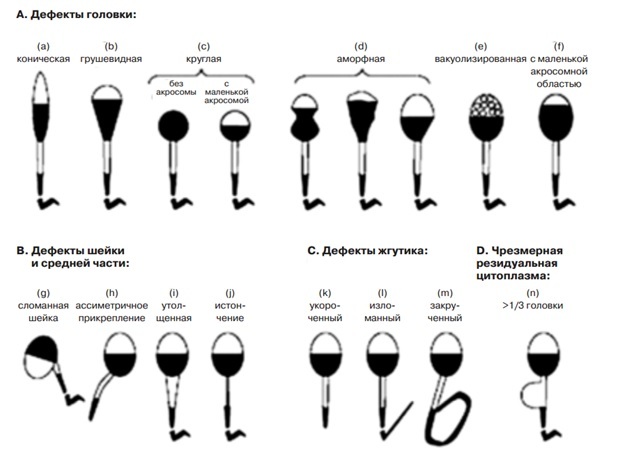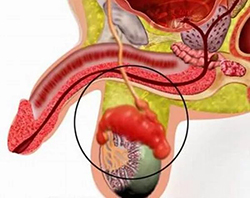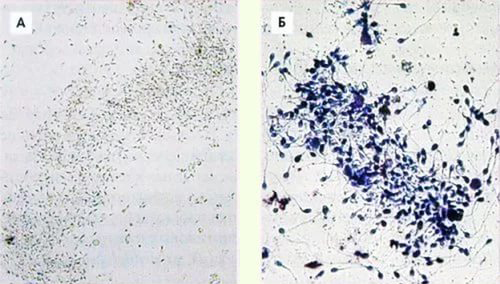Polyuria: when urine becomes too much
Many diseases not only of urological, but also other profiles are accompanied by a symptom such as polyuria. Polyuria - an increase in daily diuresis for natural or pathological reasons. This symptom is extremely painfully tolerated by patients( for good reason, it also has a second name - diabetes).Long-term polyuria is fraught with the development of a mass of complications.

Average daily urine volume of a healthy person is about 1500 ml
Contents
- 1 Causes of polyuria in men
- 1.1 Physiological factors
- 1.2 Pathological factors
- 2 Developmental patterns and clinical picture
- 3 Patient examination
- 4 Treatment
Causes of polyuria in men
Factors of pathology formationconditionally subdivided into natural( physiological) and pathological.
Physiological factors
What concerns natural factors:
- Excessive fluid intake. For obvious reasons, excess fluid must be evacuated from the body( see Maintaining a Water Balance in the Body of a Man).The psychological disorder associated with excessive fluid intake is called polydipsia.
- Edema. Edema does not always testify in favor of kidney problems. They also develop as a result of excessive water consumption, after the operation. This form of polyuria develops on day 2-3.
- Taking diuretics( diuretics).
Pathological factors
But much more often it is still about various diseases, not only the urinary system:
- Interstitial cysts, cystitis. Disorders of the bladder.
- Urinary tract infection. And, localized on any part of the tract.
- Autoimmune lesions of the urinary tract.
- Initiated pyelonephritis( inflammation of the renal pelvis).
- Excess potassium in the body.
- Diabetes mellitus. The classic cause of polyuria is both in men and in women. As a result of the increased content of glucose in the urine, the kidney structures are unable to effectively filter the liquid. The intensity of diabetes in this case is relatively small: for a normal diurnal diuresis of 1.5-2 liters, 3-5 liters of fluid are evacuated from the body.
- Tumors of the adrenal glands. First of all pheochromocytoma.
- Diabetes insipidus. One of the most difficult in terms of curating pathology. It is a lack of development of an antidiuretic hormone by the hypothalamus( a substance called vasopressin).There are many possible reasons for this, but more often than not it is necessary to talk about the presence of a neoplastic process in the chiasmally-sellar region. A tumor or a large cyst compress the tissues, causing damage to the hypothalamus. But the hypothalamus itself does not always suffer. Sometimes it happens that the body continues the normal synthesis of vasopressin, but it can not be transported to the pituitary gland, as the funnel is damaged( a thin leg that connects the hypothalamus and the pituitary gland).A classic tumor that causes squeezing and damage to the leg is the pituitary adenoma. Slightly less frequent pilocitarnye astrocytomas, pituitary cells( in Russian medical practice are called infundibula), craniopharyngiomas, germinomas. The intensity of diabetes in diabetes insipidus is truly colossal: it can be about 12-20 liters, and this is not the limit. Such patients drink a lot, otherwise dehydration quickly sets in.
- Excess of calcium in the body.
- Lack of pituitary hormones( hypopituitarism).
- Ischemic heart disease. Also heart failure. Cause stagnant fluid in the body. Paroxysmal tachycardia. Has a paroxysmal course. It is characterized by the acceleration of the heart rhythm for no apparent reason. Pathology is caused by disorders in the autonomic nervous system. The attack ends with copious polyuria.
- Migraine. The seizures of hemicranium also end in profuse and frequent urination.
There are other less common factors: excess vitamin B12, genetic diseases.
Do not confuse polyuria with pollakiuria. With pollakiuria, there are false urge to empty the bladder. Urine either does not go away at all, or is released by drop. In polyuria, the bladder is full and needs to be emptied regularly. Depending on the severity of the process, a toilet room is required at a frequency of once per hour and more often. Sometimes it comes to the fact that a person can not leave the house even for 20 minutes.
Read on: Kidney: structure and function of paired organ
Development and clinical picture of

The most common and reliable method for differential diagnosis of polyuric syndromes is a sample with loss of
. The clinical picture is typical. The main sign - frequent and profuse urination with a volume of 2.1 to 20 or more liters per day. However, depending on the underlying cause of diabetes, it manifests itself in different ways.
- As a rule, pathology makes you aware of yourself by intense urination during the daytime. At night, during the sleep, the hypothalamus produces more vasopressin, urination is depressed. Nocturia( frequent night visit to the toilet) is very likely to indicate central or nephrogenic diabetes insipidus.
- Psychogenic polyuria. It is rare( especially in men).It is considered a variant of the norm. Develops as a result of the transferred stress.
Patient examination
Urologists and nephrologists deal with this problem. Diagnosis begins with routine studies, such as oral interview with the patient and an anamnesis. First of all, it is necessary to exclude various types of diabetes. Therefore, a blood test for sugar, a general urine test( in the case of diabetes mellitus in urine, glucose is detected, diabetes insipidus or neglected pyelonephritis with impaired filtering function of the kidneys indicates a decrease in the specific density of urine below 1005).
Additionally, ultrasound, cystoscopy is prescribed to exclude inflammatory and volumetric processes in the bladder.
A little less informative are the tests for pituitary hormones.
Treatment of
Because polyuria is a multifactorial and extremely multifaceted phenomenon, there are many methods of treatment. It is necessary to give only the main principles and directions of therapy:
- Normalization of the heart in IHD and heart failure.
- Coping and preventing paroxysmal tachycardia.
- Normalization of blood sugar. Prevent the release of glucose into the urine.
- Normalization of vasopressin synthesis( substitution therapy is under way).
- Decreased concentration of potassium, calcium in the body.
- Curbing migraine attacks.
- Treatment of urinary tract infections, volumetric bladder formations.
- Adjusting the concentration of pituitary hormones.
Polyuria in men and women occurs equally often. The causes of the syndrome are manifold. Conditions are dangerous with the development of rapid dehydration. Therefore, it is required in a hurry to begin treatment and eliminate the root cause of the disease.
Read on: Hyperactive bladder in men
Recommended viewing:



